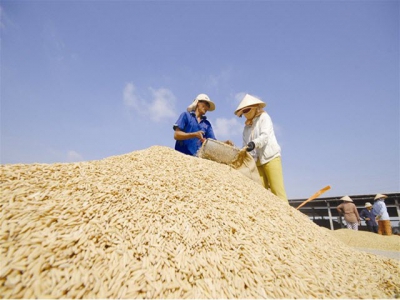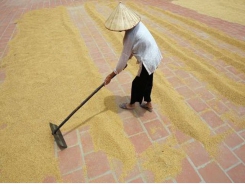Rice export growth may slow as demand drops from big customers

Vietnam had a prosperous rice export year in 2018, but has been warned of a tough year in 2019.
Vietnam exported 6.1 million tons of rice in 2018
The General Statistics Office (GSO) reported that Vietnam exported 6.1 million tons of rice in 2018, a slight increase of 270,000 tons, or 4.6 percent higher than 2017.
The slight increase in export volume was offset by the export price, $502 per ton, or 10.8 percent higher than 2017. This helped the rice export turnover exceed the $3 billion threshold, increasing by 16 percent.
Vietnam’s rice price is now equal to, and sometimes is even higher, than Thailand’s.
In 2016 and 2017, Vietnam’s average export price was higher than Thailand’s by $7 and $9 per ton, respectively. In 2018, the gap was erased, staying at $502 per ton.
This was attributed to the sharp increase in sticky and fragrant rice exports which had better prices (in 2017, the exports of these types of rice exceeded 3 million tons, accounting for 46.4 percent of total exports) and the sharp decrease in white rice exports.
The slight increase in export volume was offset by the export price, $502 per ton, or 10.8 percent higher than 2017. This helped the rice export turnover exceed the $3 billion threshold, increasing by 16 percent.
Meanwhile, Thailand’s proportion of fragrant Thai Hom Mali rice exports decreased from 31.7 percent to 20.1 percent. The country also focused on liquidating its inventory rice at low prices.
As for prospects in 2019, Nguyen Dinh Bich, a trade expert, warned that 2019 could be a tough year for Vietnam’s rice exporters.
In his article on Thoi Bao Kinh Te Saigon, Bich said that exporters want to ‘sell rice at high prices’, and cannot export all the rice output. Controlling the rice export price to ensure reasonable price levels is a big issue for consideration.
The expert cited a report as saying that Vietnam’s rice export volume in 2018 was 6.1 million tons, while the rice equivalent output was much higher and it was estimated that 500,000 tons of rice still could not be sold.
The other problem for Vietnam is the predicted lower demand from key markets.
According to USDA, the total rice output in the world in 2018 decreased by 4 million tons, but the reserves at the beginning of the year increased sharply to a record high of 162 million tons, enough for four-month consumption. Meanwhile, the rice demand is still unchanged, at 45 million tons.
The demand from Indonesia, Vietnam’s second biggest importer in 2018, is predicted to drop sharply from 2.15 million tons to 800,000 tons this year. Meanwhile, China is tightening control over rice imports.
Có thể bạn quan tâm
Phần mềm

Phối trộn thức ăn chăn nuôi

Pha dung dịch thủy canh

Định mức cho tôm ăn

Phối trộn phân bón NPK

Xác định tỷ lệ tôm sống

Chuyển đổi đơn vị phân bón

Xác định công suất sục khí

Chuyển đổi đơn vị tôm

Tính diện tích nhà kính

Tính thể tích ao hồ



 Asia Coffee Vietnam shipments seen halted on holiday;…
Asia Coffee Vietnam shipments seen halted on holiday;…  Viet Nam loses out on global market without…
Viet Nam loses out on global market without…